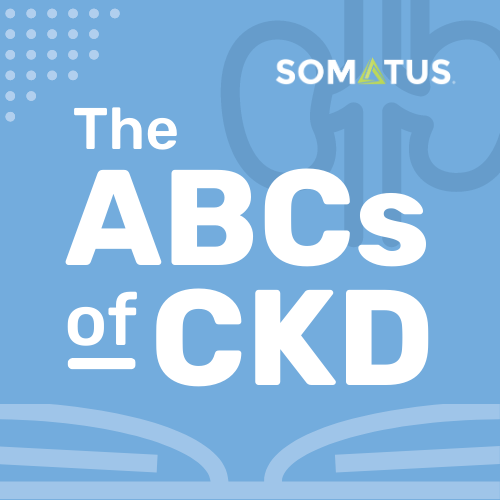Somatus Patient Blog
Kidney Terminology 101
Test your kidney smarts with a quick refresher on some key CKD terms!

Doctors and nurses often use medical jargon that can be confusing, but we’re here to help! Whether you’re newly diagnosed, caring for a loved one, or just need to refresh your memory, understanding some key terms about kidney disease can help you feel empowered and informed. Below is a glossary of commonly used kidney health terms and acronyms that can help you expand your kidney care knowledge.
Pro tip: Don’t be shy about asking your care team what medical terms mean if you don’t know. It’s fine to say, “I didn’t quite get that, can you say it in plain language?” The important thing is that you walk away from every interaction understanding what you heard.
Acute Kidney Injury
An acute kidney injury (AKI) is a sudden event that harms the kidneys. The event may be caused by a toxin, like a medication, or by blood loss, sepsis, dangerously high potassium levels in the blood, heart failure, or abnormal heart rhythms.
Arteriovenous Fistula
An arteriovenous fistula (AVF) is a type of hemodialysis (HD) access. It’s considered the best option for HD because it uses your own artery and vein (rather than man-made tubing) and is less prone to infection or blood clots than other HD access types.
Arteriovenous Graft
An arteriovenous graft (AVG) is another type of (HD) access. A surgeon uses a piece of man-made tubing to link to your artery and vein. If your veins are not large or strong enough for a fistula, a graft is a good choice.
Central Venous Catheter
Another type of HD access is a central venous catheter (CVC), which is a Y-shaped tube inserted into the chest. CVCs are used if you need dialysis urgently and don’t have a working AVF or AVG yet.
Chronic Kidney Disease
Chronic Kidney Disease, or CKD for short, is when your kidneys can’t filter the blood the way they should because they are damaged. It is a slow disease process that harms your kidneys (though you may not know it or feel it). CKD refers to all five stages of kidney damage, from very mild damage in stage 1 to End-Stage Kidney Disease, where the kidneys completely shut down and dialysis is required.
Creatinine
Creatinine is a waste product in your blood that forms each time you move your muscles. For women, a normal level is 0.6 – 1.1 mg/dL. For men, a normal level is 0.7 -1.3 mg/dL. Higher levels may mean a kidney problem.
Dialysis
Dialysis is a treatment that filters your blood to remove waste, balance fluid, and control your blood pressure—doing the job of the kidneys when they can no longer do it. Dialysis can be done two ways: Peritoneal dialysis (PD) or Hemodialysis (HD).
End-Stage Kidney Disease
End-Stage Kidney Disease (ESKD), also known as kidney failure, is the last stage of chronic kidney disease. It means that the kidneys have stopped working well enough for a patient to survive without treatment (i.e., dialysis).
Estimated Glomerular Filtration Rate
This is a calculation used to estimate how well your kidneys filter waste from your blood. Your estimated glomerular filtration rate (eGFR) is a number based on your creatinine levels and is about the same as what percent your kidneys work. So, an eGFR of 60 means that your kidneys are functioning about 60% of normal.
Hemodialysis
Hemodialysis, or HD for short, uses a machine outside of your body to filter your blood. HD can be done at home or in a clinic, where you are connected to a machine by tubing. The machine filters waste from your blood and then sends it back into your body. With hemodialysis, you may need between 3-6 treatments each a week, depending on what your doctor orders.
Hemoglobin
Hemoglobin (Hgb) gives your red blood cells their color. A low Hgb is a sign of anemia, a shortage of red blood cells. Anemia, which can start or worsen with CKD, can make you feel weak and fatigued. You might also experience brain fog, shortness of breath and cold hands and feet.
Kidney Transplant
A kidney transplant is when a donated, healthy kidney is placed inside your body and connected to your blood vessels and bladder. It takes over the function of the failing kidney and helps bring your body back into balance. A donated kidney must be a good match for you and can come from a living donor or a deceased donor.
Nephrologist
Nephrologists are medical professionals who diagnose, treat, and manage acute chronic kidney problems and diseases.
Peritoneal Dialysis
Peritoneal Dialysis, or PD for short, is a type of dialysis that’s done in your own home by using the lining of your belly, called the peritoneum, to act as a filter for your blood. PD is the best choice for most people because it gives you hours of gentle treatment (typically while you sleep), your diet is less limited, and it provides you with more flexibility for your lifestyle.
Phosphorus
Phosphorus works with vitamin D and calcium to keep your bones strong. Excess phosphorus, found in many processed foods and drinks, is harmful to your blood vessels and kidneys.
Potassium
Potassium is an essential mineral found in many foods (especially fruits and vegetables) that lets our nerves talk to our muscles and keeps our hearts in rhythm. If you have CKD, your kidneys may remove less potassium than they ought to. So, you will need blood tests to check your levels.
Renal
The word “renal” refers to kidneys, so you may see both words used. For example, renal failure means kidney failure.
Sodium
Sodium, found in salt, helps to keep fluid balanced and stabilize blood pressure. It helps to send nerve signals too, which can affect our muscles. However, consuming excess salt from food and beverages can cause higher blood pressure and lead to fluid retention.
Urine Albumin
Albumin is a form of protein. Healthy kidneys do not let much albumin into your urine. So, high urine albumin levels could mean that something is wrong with your kidneys.
Urine Albumin-to-Creatinine Ratio
The urine albumin-to-creatinine ratio (UACR) is a test that looks at creatinine and albumin in your urine. The result tells how much albumin is in your urine over 24 hours. 30 mg/g or less is normal. A higher number may mean kidney damage and is usually the earliest signal that there is a kidney problem.
Urine Protein-to-Creatinine Ratio
This test measures the protein and creatinine in a sample of urine. It is used when the kidneys are not filtering out access protein. The normal UPCR is less than 200 mg/g.
Vascular Access
A vascular access procedure involves the insertion of a flexible and sterile thin plastic tube, or catheter, into a blood vessel to provide an effective method of drawing blood or delivering medications into a patient’s bloodstream.


